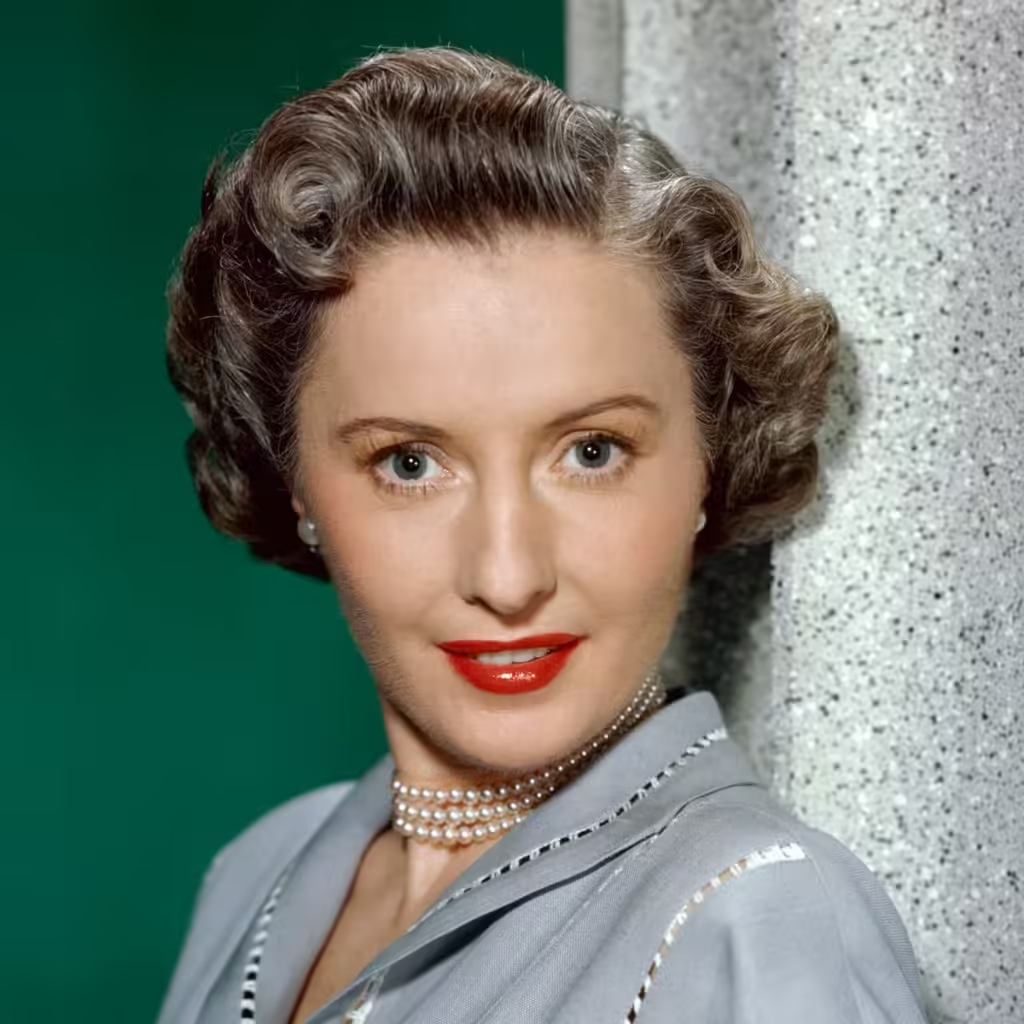
Table of Contents
Synopsis
Barbara Stanwyck, born Ruby Stevens on July 16, 1907, in Brooklyn, New York, was a distinguished actress whose career spanned over six decades, during which she appeared in more than 80 films. Known for her portrayal of strong-willed women, Stanwyck’s notable works include Stella Dallas and the iconic film noir classic Double Indemnity, in which she redefined the archetype of the femme fatale. Her contributions to television earned her several Emmy Awards for The Big Valley and The Barbara Stanwyck Show. In recognition of her significant impact on the film industry, she was awarded an honorary Academy Award in 1981. Stanwyck passed away in 1990.
Early Life
Barbara Stanwyck’s journey began in a challenging environment. Orphaned at the age of four following the tragic death of her mother, who was killed after being pushed from a moving streetcar, Stanwyck faced adversity from an early age. Her father, unable to cope with the loss, abandoned his five children, leaving Stanwyck and her siblings to navigate life without parental support. Raised by her older sister, a showgirl, Stanwyck learned to become independent early on, often left to fend for herself. By the age of nine, she had begun smoking, and by 14, she had dropped out of school. At 15, she entered the entertainment industry as a chorus girl, eventually making her Broadway debut in 1926 as a cabaret dancer in The Noose, shortly after adopting the stage name Barbara Stanwyck.
Broadway and Film Career
Stanwyck made her transition from Broadway to film in the late 1920s, beginning with a role as a dancer in the film Broadway Nights (1927). In 1928, she married comedian Frank Fay, and the following year, she appeared in The Locked Door (1929). Despite a rocky start in Hollywood with two unrecognized film roles, Stanwyck’s fortunes changed when she convinced renowned director Frank Capra to cast her in his 1930 film Ladies of Leisure. This pivotal role brought her the acclaim she sought, establishing her as a formidable actress.
Stanwyck’s portrayal of women with complex motivations, often prioritizing financial security, resonated with audiences and marked a significant shift in the representation of female characters in cinema. Following her success in Ladies of Leisure, she signed a contract with Columbia Pictures and starred in several successful films, including Illicit (1931), Ten Cents a Dance (1931), Night Nurse (1931), and Forbidden (1932), solidifying her status as one of Hollywood’s leading actresses.
Landmark Roles
Barbara Stanwyck, alongside fellow Golden Age actresses such as Bette Davis and Joan Crawford, played a pivotal role in redefining women’s roles in cinema. Departing from the archetypes of damsels in distress and contented housewives prevalent in films of her time, Stanwyck portrayed a diverse array of women, each with unique motives and ideals. Notable performances include her leading roles in Ladies They Talk About (1932) and Annie Oakley (1935), where she embodied the titular character.
In 1937, Stanwyck’s extraordinary talent was recognized with an Academy Award nomination for her performance in Stella Dallas (1937). She received three additional nominations for Best Actress in a Leading Role for her work in Ball of Fire (1941), Double Indemnity (1944), and Sorry, Wrong Number (1948), although she did not win the coveted award. Notably, her portrayal of the seductive and dangerous Phyllis Dietrichson in Double Indemnity garnered significant acclaim from critics and the Academy of Motion Picture Arts and Sciences. In recognition of her lifetime achievements, Stanwyck was awarded an honorary Oscar in 1982. Throughout her career, she starred in more than 80 films.
Later Roles
As Stanwyck transitioned into her later years, her focus shifted toward television, resulting in fewer film appearances. In 1952, she made her television debut on The Jack Benny Program (1932-55) and subsequently secured regular roles in various series, including Goodyear Theater (1957-60), Zane Grey Theater (1956-61), and The Barbara Stanwyck Show (1960-61), for which she received a Primetime Emmy Award. One of her most memorable television roles was as Victoria Barkley in the popular series The Big Valley (1965-69).
In the 1980s, Stanwyck delivered several noteworthy television performances, including her role as Mary Carson in the acclaimed miniseries The Thorn Birds (1983), alongside Richard Chamberlain and Rachel Ward. Her portrayal of Ward’s strong-willed grandmother earned her both a Golden Globe and an Emmy Award. Stanwyck returned to prime time two years later with a role in Dynasty and later appeared in its spin-off, The Colbys.
Personal Life
Despite her dynamic on-screen presence, Stanwyck was known to be reclusive and reserved in her personal life. After marrying comedian Frank Fay, the couple adopted a son, Dion Anthony Fay, in 1932. Their marriage ended in divorce in 1935 due to Fay’s reported struggles with alcohol. In 1939, Stanwyck married actor Robert Taylor; however, the couple separated in 1951 after more than a decade together.
Following her second marriage, Stanwyck chose to live a solitary life, prioritizing her career over social engagements. During her later years, one of her closest relationships was with her The Big Valley co-star, Linda Evans. Following the death of Evans’ mother, Stanwyck provided a maternal presence in her life during their time filming together.
Barbara Stanwyck passed away on January 20, 1990, from congestive heart failure in Santa Monica, California. In accordance with her wishes, no funeral or memorial service was held, leaving her legacy as a pioneering yet often overlooked actress in Hollywood history.
